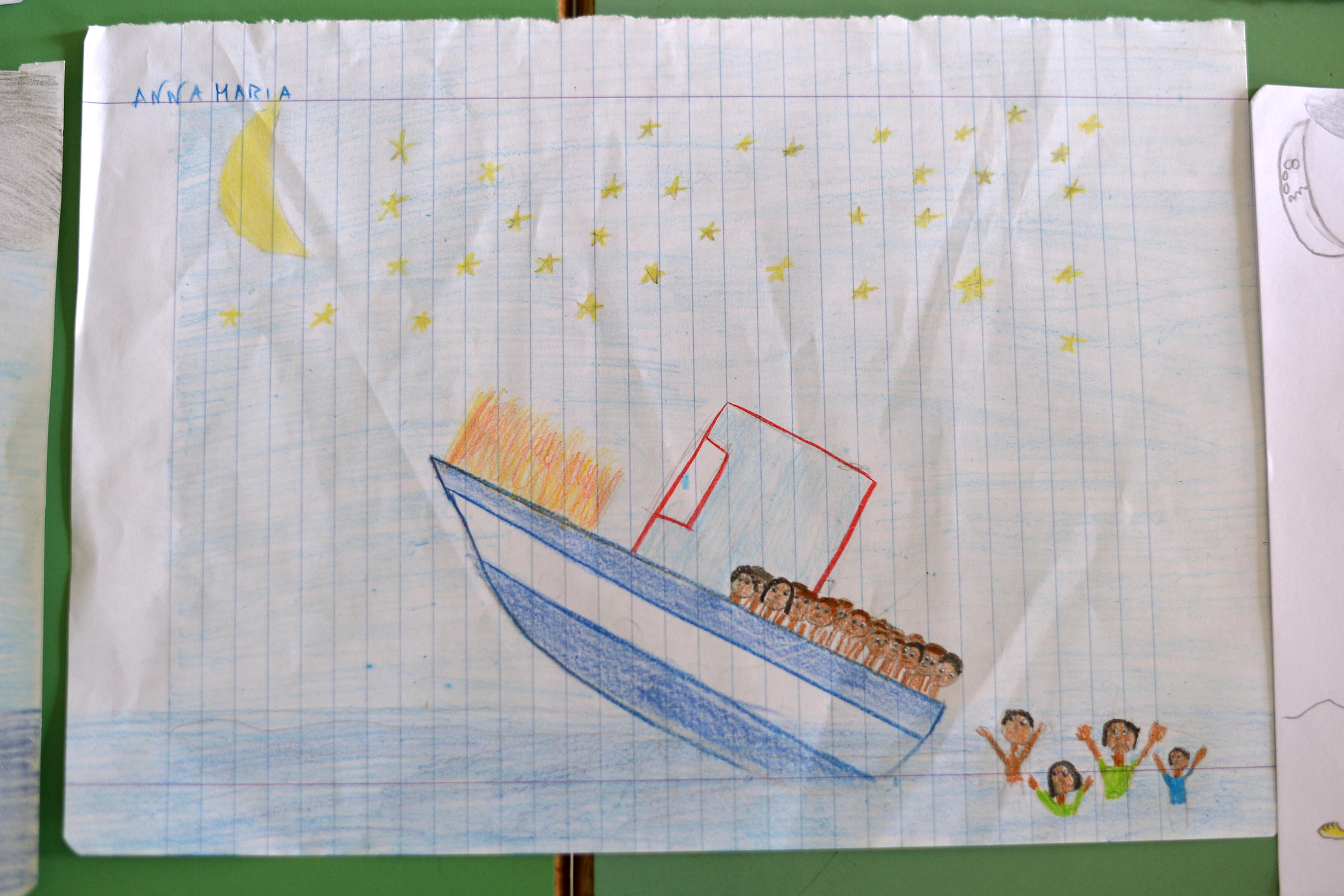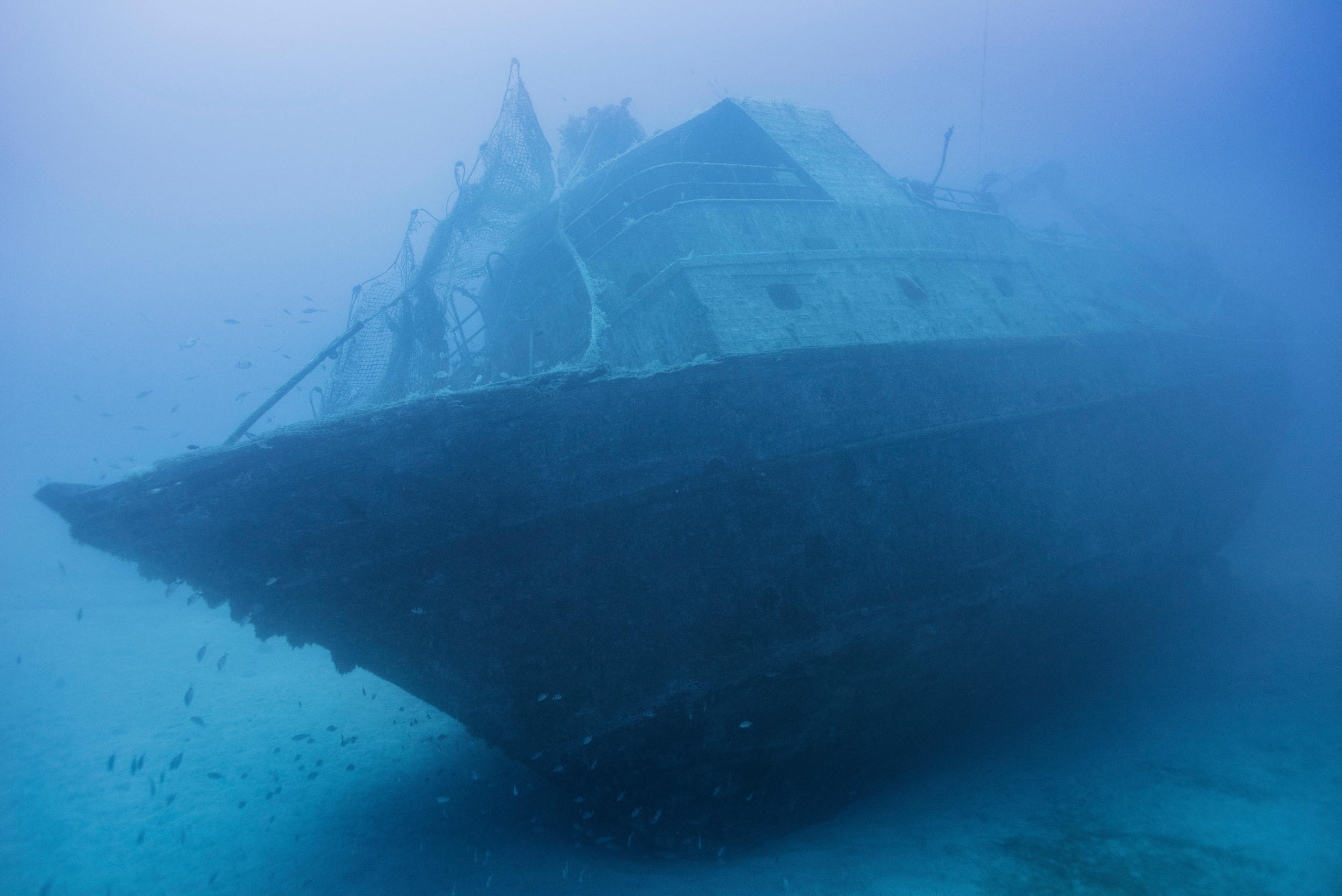
The struggle to identify drowned migrants

Three years after the migrant boat tragedy in Lampedusa, in which 366 people drowned, relatives are still trying to identify dead bodies to conduct a dignified burial. It’s a difficult but important process which is being supported by the Swiss Red Cross.
“We told them several times that they shouldn’t set out, but they didn’t listen. One day they got into a boat heading for Europe. We haven’t heard from them since,” says Bila Bila Barre from Somalia, recounting the story of his two nephews Hussene (20) und Maxamud (19). They wanted to travel to Italy via Libya.
Barre is certain that the young men perished with other migrants in the terrible shipwreck off the coast of Lampedusa on October 3, 2015, in which at least 366 people died. Ironically, it was one of the few refugee tragedies in which most of the dead were recovered.

More
Deadly silence
“The dates coincide, even if none of the 155 survivors can confirm they saw the two on board. But as long as we haven’t seen any bodies there’s still doubt. Are they being held somewhere? Were they killed by criminal gangs specialising in the trafficking of human organs? You hear so many stories,” says Barre, who arrived in Switzerland as a refugee in the 1990s and now holds Swiss citizenship.
At the request of his sister, he contacted the Swiss Red CrossExternal link to try to find the two young men, or at least their remains. The Swiss Red Cross receives requests on a daily basis from families who have been separated by conflict or exile. It helped convince other Red Cross Societies to register migrants missing at sea.
It’s a first step towards identifying people who have died in the Mediterranean. According to the UN refugee agency (known as the Office of the United Nations High Commissioner for Refugees, or UNHCR)External link, that number has risen to more than 10,000 since 2014.
Italy took a further important step following the 2015 Lampedusa tragedies, but without European Union support. At the Labanof laboratory in the Institute of Forensic Medicine at the University of Milan, the victims’ post-mortem data, such as DNA samples, is analysed. In addition, so-called “Ante-mortem data” are collected – everything from personal belonging and photographs to scars or tattoos.
Such information can help with the identification of victims, explains Vittorio Piscitelli, who has been the Italian government’s Special Commissioner for Missing Persons since December 2013.
Searching for a name
With the support of the Swiss Red Cross, last autumn Barre travelled to Milan hoping to identify his nephews. Other family members who live in Switzerland came as well to search for information about three additional migrants who went missing at sea.
“At the Labanof lab, they showed me an album with photos of the bodies which they had found in the sea. I had taken a recent photo of my nephews and I tried to look for similarities with the bodies which had been deformed by the water. But it was so difficult . . .”
Using photos is often the only option for identifying the bodies. For DNA tests to be reliable, there needs to be a direct family link, between parents and children or between brothers and sisters, for example. But sometimes victims’ families still live in conflict-ridden countries like Syria or Eritrea, and cannot request help from their governments or even leave the country.
Thus, despite huge efforts from various organisations helping migrants as well as the Italian authorities, many victims who drowned at Lampedusa have been buried in Sicily. A simple ID number is placed on their coffin. More than eight months after his trip to Milan, Barre is still awaiting a reply from the laboratory.
Proper mourning
Nicole Windlin is responsible for the Swiss Red Cross tracing service. She is convinced of the importance of identifying victims of shipwrecks. The aim is not just to give dignity back to the dead but also to those still living.
“To mourn properly, it’s essential that people can be sure that the person has actually died,” she explains. “Finding a body makes it possible to have a proper burial, according to the rites of each culture.”
There is also a legal and administrative aspect, she adds: “For widows, orphans and parents, when there is no document confirming the death, many questions cannot be answered. For example, a partner cannot remarry or inherit the assets of the missing person.”
According to Nicole Windlin, even 20 years after the conflict in the former Yugoslavia around 100 people in Switzerland are still hoping to find the bodies of their loved ones.
However, the case of people who drown in the Mediterranean is much more complex, she adds: “In Bosnia some families were able to remember what their relatives were wearing on the day they disappeared. Migrants, however, are often on the road for months, even years, and the only information we get are photos published on social media, posed pictures. That’s why it’s harder to recognise people.” In addition, there is no European database that catalogues migrants who have disappeared at sea.
A big challenge
With the arrival of spring, the number of boats packed with people leaving Libya for Italy has increased – as well as the number of boats sinking. According to UNHCR, from the beginning of 2016 on average 15.8 people have died every day crossing the Mediterranean. Most bodies are recovered months later.
Another boat tragedy that occurred on April 18, 2015, is a good example of the challenges. An estimated 700 refugees are thought to have died on that ship. Until now, the Italian navy has only managed to find 169 bodies located near the shipwreck. It is estimated that 200-400 skeletons are still trapped in the sunken hull, says Piscitelli. Attempts to raise the wreckage started recently – more than a year after the accident.
Piscitelli is frank. “The EU is afraid of the management of the migration phenomenon and of the bodies fished from the sea. It has left Italy with the responsibility of financing and managing the identification programme. It has turned its back on us.”
A flood tide of refugees
The total number of refugees and internally displaced people worldwide rose to a record 65.3 million at the end of 2015, UNHCR said Monday. On average, 34,000 people a day were displaced last year, marking a 50% increase just since the Syria war began in 2011. More than one million people fled to Europe last year, wreaking political havoc in the European Union.
You can contact the author on Twitter at @stesummiExternal link
What should be done to prevent these tragedies in the Mediterranean? Give us your view in the comments below.
Translated by Simon Bradley

In compliance with the JTI standards
More: SWI swissinfo.ch certified by the Journalism Trust Initiative
































You can find an overview of ongoing debates with our journalists here . Please join us!
If you want to start a conversation about a topic raised in this article or want to report factual errors, email us at english@swissinfo.ch.